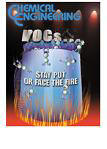Risk assessment and process safety management eBook
Process Hazards Analysis
By Ian Sutton
This 310 page manual is a great enterprise risk management tool related to HAZOP study and process FMEA.

| Process Hazards Analysis EBook |
| ESBN: C60-802C-2c45-72D2 |
| Description: Process Hazards Analyses (PHAs) are an integral part of any process safety program. If you cannot identify hazards then you can nether remove them nor mitigate against them. This book describes in detail how to run a Process Hazards Analysis, and how to effectively identify hazards. The book focuses on real-world issues such as the role of the leader, team selection, writing the final report, quantification of risk, and follow-up to findings. Quotations and topics raised in the book include the following:
|
Download E-book immediately after purchase |
Price: |
|
Table of Contents
Chapter 1
Process Hazards Analysis Basics
Introduction
Background
Historical Review
Elements of a PHA
Intentional Error
Process Safety Management
Standard Worked Example
Safe Operating Limits
Maximum Allowable Working Pressure
PHA Team Estimate
` Unsafe Mixing Scenarios
Materials of Construction Matrix
Risk
Components of Risk
Subjective Nature of Risk
Fixation
Experience of Events
Quantifying Risk
Risk Matrices
Consequence Matrix
Frequency Matrix
Risk Matrix
Hazard Identification
Extrapolation Of Experience
Creative Thinking
Checklists And Standards
Formal Logic Analysis
Safeguards
Defining A Safeguard
Levels Of Protection
Occupational Safety
PHA Techniques
Hazard And Operability Method (HAZOP)
What-If Method
Checklists
What-If/Checklist Method
Failure Modes & Effects Analysis (FMEA)
Fault Tree Analysis
Other Appropriate Methods
Major Hazards Screening
Design PHAs
Leading a Design PHA
Sequence of PHAs
Conceptual Design
Preliminary Design
Final Design
Pre-startup Safety Review
Management of Change
Decommissioning / Demolition
Insurance PHA
Strengths And Limitations of PHAs
Strengths of PHAs
Limitations of PHAs
Non-Process Applications
Conclusions
Chapter 2
Organization Of A PHA
Introduction
Organization
Client / Customer
Senior Management
Plant Manager
Steering Committee
Corporate Guidance
Project Manager
The PHA Team
Leader
Scribe
Operations Personnel
Process Engineers
Mechanical/Maintenance/Instrument Personnel
Specialists
Designers
Alternative Team Approaches
PHA Preparation
1. Issue a Charge Letter
2. Issue Documentation
3. Choose a Meeting Room
4. Select Computer System
5. Establish The Meeting Rules
6. Kick-Off Meeting
Steps Of A PHA
1. Node Selection and Definition
2. Process Guideword / Safe Limits
3. Identification of Hazards and their Causes
4. "Announcement" of the Hazard
5. Identification of Safeguards
6. Hazard Consequences
7. Predicted Frequency of Hazard
8. Risk Ranking
9. Findings
10. Next Process Guideword / Node
Shorter PHAs
Conclusions
Chapter 3
Hazard And Operability Method: HAZOP
Introduction
Mechanics of a HAZOP
Node Selection
Process Guidewords
Deviation Guidewords
Team Discussion
Common Issues
Loss Of Containment
Reference Previous Nodes
High Flow
Low/No Flow
Reverse Flow
High Pressure
High Temperature
High Level
Batch Processes
Metrics
Conclusions
Chapter 4
What-If Method
Introduction
Node Review
Equipment and Function Review
What-If for Batch Processes
Operating Procedures What-If
Common Scenarios
Reverse Flow to a Utility Header
Survivability of Utilities
Distributed Control Systems
Water in Hot Liquid
Blocked-In Pump
Polymerization
External Fire
Multiple Uses of Equipment
Critical Control Valves in Manual
Fail Safe Positions
Check Valve Reliability
Heat Exchanger Tube Failure
Blocked-In Relief Systems
Pressure in Relief Headers
Overload of Overhead Vacuum Lines
Underground Piping
Hoses
Conclusions
Chapter 5
Checklist and FMEA
Introduction
Checklist Method
Checklist Structure
Checklist Format
Checklist Questions
Nodes
Failure Modes And Effects Analysis (FMEA)
The FMEA Technique
Organization of an FMEA
Failure Modes
Conclusions
Chapter 6
Fault Tree Analysis
Introduction
Fault Tree Development
Top Event
Failure / Fault
OR Gate
Top Event OR Gate
Intermediate Events
AND Gate
Base Events
Labeling
Voting Gate
Static Model
Cut Sets
Quantification
OR Gate
AND Gate
Voting Gate
Cut Sets
Risk Ranking
The Pareto Principle
Data Quality
Event Contribution
Common Cause Effects
Generic Fault Trees
Generic Safety Fault Tree
Generic Reliability Fault Tree
Software
Discussion of the Fault Tree Method
Qualitative Fault Tree
Conclusions
Chapter 7
Reporting and Follow-Up
Introduction
Attributes of a Good PHA Report
Timeliness
Completeness/Thoroughness
Clarity
Sensitivity
Positive Attitude
Reporting Organization
Reporting Process
1. Notes Clean-Up
2. Team Review
3. Draft Report
4. Client Review
5. Final Report
6. Follow-Up
Report Structure
A. Disclaimer
B. Summary of Findings
C. Objective of The PHA
D. Regulatory Issues
E. Method Used
F. The Team
G. Risk Ranking Technique
H. Findings and Action Items
I. Links to the PSM Program
J. PHA Notes
K & L. Attachments and References
Report Distribution
Shorter PHAs
Writing Guidelines
Minimalist Writing
Language Style
Findings Terminology
Writing Quality
Appearance
Report Template
Follow-Up
Findings Management
1. Create Recommendation(s)
2. Implement
3. Close Finding
Conclusions
Chapter 8
Regulations, Standards and Legal Issues
Introduction
The OSHA Regulation
OSHA Guidance
Analysis Of The Regulation
Sitting
Human Factors
Slips
Mistakes
Violations
Error Following an Emergency
EPA Risk Management Program (RMP)
Tiering / Program Levels
Covered Chemicals
Formal Management System
Community Participation
Emergency Plan
Five-Year Accident History
Legal Issues
Follow Up to Findings
Communication with the Public
Internal Communication
Letter of Certification
Conclusions
Chapter 9
Process Safety Management
Introduction
Definition Of Process Safety Management
Process Safety Management Principles
Process Safety Management Elements
Element #1 - Employee Participation
Element #2 - Process Safety Information
Element #3 - Process Hazards Analysis
Element #4 - Operating Procedures
Element #5 - Training
Element #6 - Contractors
Element #7 - Pre-startup Safety Review
Element #8 - Mechanical Integrity
Element #9 - Hot Work
Element #10 - Management Of Change
Element #11 - Incident Investigation
Element #12 - Emergency Planning And Response
Element #13 - Compliance Audits
Element #14 - Trade Secrets
Revalidating PHAs
Future PHAs
Quantitative
Computer Control
Industry Standards
Reliability And Quality
Risk Based Techniques
Other Industries
Malicious Acts
Conclusions
Price: US$65.00 US$ 59.99
Download E-book immediately after purchase
Related titles:
Electrical Safety in HAZMAT Environments Video Course
The Practical Guide to Hazardous Area Classification
Hazardous Area Instrumentation Course
Performance Safety: Lessons For Life
Online OSHA Training Video Library
OSHA Forklift Certification Training Series

